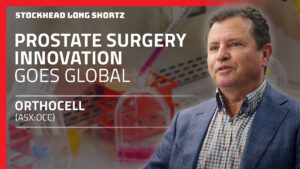Investors’ sneak peek at biotech’s bright future

Pic:Getty Images
- The 2024 Bioshares Biotech Summit being held in Fremantle from July 12-13
- Morgans says conference likely to attract institutional and high net worth WA investors
- Day one focus on new opportunities, finding the next blockbuster drug and repurposing existing pharmaceuticals
While Western Australia is predominantly known as the resources state, biotech is set to steal the limelight with the 2024 Bioshares Biotech Summit being held in Fremantle from July 12-13.
Organisers are expecting more than 200 attendees and presentations from more than 30 ASX companies.
Morgans senior health care analyst Scott Power is attending the conference and says the Fremantle location is likely to attract institutional and high net worth investors from WA, who may have a different perspective on investing in the sector.
“The conference is always a good bellwether for the mood of the sector and given the macro picture globally is improving with interest rates peaking and heading down, it provides a good background for increasing investor interest,” Power says.
“There are going to be plenty of insights provided. We will be focussed on those companies that have a clear business plan leading to positive cashflow or delivering clinical results/approval that can generate licencing interest.”
The program is split into various segments on Friday’s first day.
New Opportunities
With many companies in the sector having successfully developed their first product or product application, the new opportunities segment will examine new market and product opportunities that are being targeted. Among companies presenting in the new opportunities segments is:
EBR has developed the WiSE Cardiac Resynchronization Therapy (CRT) system, which holds the distinction of being the world’s first “leadless” pacing system for heart failure.
Roughly the size of a cooked grain of rice, the ground-breaking WiSE technology employs proprietary wireless techniques to administer pacing stimulation directly to the heart’s left ventricle.
To date more than 500 patients have been implanted with the tiny WiSE device, including some approaching 10-year anniversaries.
EBR announced positive results of its pivotal SOLVE-CRT (SOLVE) trial at the Heart Rhythm Society’s (HRS) 2023 conference in New Orleans.
The New Zealand headquartered soft-tissue repair company’s products are used globally in a range of procedures from trauma and hernia surgeries to mastectomies.
ARX’s source material for its growing range of products is ovine forestomach matrix (sheep rumen) sourced exclusively from New Zealand, which provides a scaffold – or framework – for new tissue to build.
The forestomach matrix is processed and sterilised to remove DNA and cells, leaving the tissue scaffold called the extracellular matrix (ECM) which has a dense network of vascular channels, a similar structure to human skin and contains more than 150 proteins known to be important in the healing process.
Neuren Pharmaceuticals (ASX:NEU)
In 2023 NEU became the market darling of the ASX healthcare sector after receiving US FDA approval via its US marketing partner for Trofinetide, selling under the name Daybue, to treat Rett’s Syndrome.
The countdown is now on for clinical trial results for a rare disease called Angelman using NEU’s more advanced compound known as NZ-2591. It will be the third indication for NZ-2591 with positive results released for Phelan-McDermid in December 2023 and Pitt Hopkins in May.
Finding the next blockbuster drug
Following on from NEU’s DAYBUE success, which Aussie biotech will deliver the next blockbuster drug? Bioshares says a selection of the leading drug developers will discuss aspects of their approach to achieving this goal, including partnering and clinical trial data. Among companies presenting in the new opportunities segments is:
DXB announced positive interim analysis results in March from its ACTION3 Phase 3 trial of DMX-200 in patients diagnosed with rare kidney disease focal segmental glomerulosclerosis (FSGS), with the clinical trial now formally expanding into Part 2.
In May, DXB announced it will receive up to $120.5m after inking an exclusive licence deal with Taiba for the commercialisation of DMX-200 in several Middle Eastern countries.
It’s the second licence deal for DXB-200, with another worth $230m in upfront and milestone payments, plus royalties signed in October last year with Advanz Pharma covering the European Economic Area, UK, Switzerland, Canada, Australia, and New Zealand.
The clinical-stage drug development company is focused on developing two potent orally-available inhibitors of Focal Adhesion Kinase (FAK) for treating cancer and fibrotic diseases.
ATX’s pipeline drugs were initially developed by the Cancer Therapeutics CRC (CTx), an Australian industry-academic collaboration that involved leading cancer and drug discovery researchers from the country’s top cancer research institutes.
FAK is an increasingly important target in the field of cancer, with ATX having a particular development focus in fibrotic cancers such as pancreatic and ovarian cancer.
AT recently announced it had recruited 26 patients in the Phase 2a stage of its clinical trial ACCENT investigating narmafotinib in combination with standard-of-care chemotherapy of gemcitabine and Abraxane in first-line patients with advanced pancreatic cancer.
Repurposing existing pharmaceuticals
Bioshares says a short-cut to the 15-year drug development process is to identify a pharmaceutical that has been previously approved or developed by others, and repurposing that compound for a new indication.
In these cases, the safety profile has already been well characterised, with evidence of efficacy being the main endpoint to secure regulatory approval. Among companies presenting in this segment is:
RAC is reformulating and repurposing the anticancer drug bisantrene, which was originally developed in the 1970s and ’80s by a small French pharmaceutical company called Lederle Laboratories as a lower cardiotoxic alternative to the anthracycline class of chemotherapeutics.
The biotech says the original formulation of bisantrene was highly insoluble in blood, making it complex and difficult to use. Unable to solve the solubility issue, Lederle abandoned commercial development of bisantrene despite it showing significant efficacy in several cancers including breast, ovarian and leukaemia.
After identifying the potential of bisantrene, RAC scientists were able to solve the solubility issue through reformulation and is about to start clinical trials of the new formulation in a range of cancer types.
Island Pharmaceuticals (ASX:ILA)
ILA CEO Dr David Foster told Stockhead the antiviral drug development company focuses on repurposing drugs as a strategy to move quickly into clinical trials.
“One of the main benefits of having a repurposing strategy is that years of development and potentially hundreds of millions in expense have already been supported by a third party,” he says.
Foster says it is most common for repurposing companies to take an approved drug, reformulate it and pursue an approval in the same or similar indication as the original drug.
However, he says ILA is taking a slightly different approach with its lead drug candidate, ISLA-101, which was initially developed as a cancer drug but has never been approved.
“Based on some excellent work by investigators at Monash University in Melbourne, we discovered that ISLA-101 also has excellent activity against a variety of viruses, including all four strains of dengue fever as well as the West Nile and Zika viruses,” he says.
At Stockhead, we tell it like it is. While EBR Systems, Aroa Biosurgery, Dimerix and Race Oncology are Stockhead advertisers, the companies did not sponsor this article.
Related Topics

UNLOCK INSIGHTS
Discover the untold stories of emerging ASX stocks.
Daily news and expert analysis, it's free to subscribe.
By proceeding, you confirm you understand that we handle personal information in accordance with our Privacy Policy.








